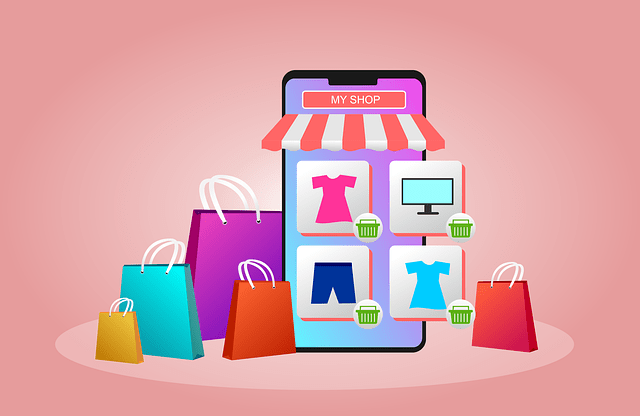
In the midst of a worldwide health crisis, e-commerce businesses experienced sales figures that would have been unimaginable just a year ago. Both younger and older customers abandoned physical stores and instead chose to make purchases from the convenience of their own homes and mobile devices.
The e-commerce sector has experienced significant growth in recent years, and the latest predictions for e-commerce trends in 2023 indicate that this upward trajectory will continue. To put the rate of this growth into perspective, research estimates that the global e-commerce market will reach a staggering 58.74 trillion by 2028.
Is your e-commerce store prepared for growth? This underscores the significance of having a well-established e-commerce development strategy. Small businesses must stay updated with trends and integrate fresh e-commerce strategies to remain competitive.
1. Optimize your website
To ensure growth in 2023, we should prioritize the fundamentals. Having a business-optimized website is crucial since all other items on the agenda are insignificant. While clicks may be desirable, lacking an optimized and conversion-friendly site will prevent any purchases from happening.
Kick off the new business year by conducting an assessment and reviewing this essential list of optimizations.
- Design. Work with someone outside your company to ensure that your design is intuitive and customer friendly.
- SEO. If you don’t rank on Google, no one will find your site.
- Chatbot. Add a chatbot feature on your site to interact and generate revenue instantly with live customers.
- Appointment/Meeting Scheduling. If customers want to know more about your product, offer them a way to set an appointment with a scheduling tool like Calendly.
2. Create content and then create some more
E-commerce companies face difficulties in distinguishing themselves. The era of producing a few 500-word blogs periodically is no longer effective. A comprehensive approach comprising videos, blogs, podcasts, and paid advertising is essential to achieve engagement.
In order to produce exceptional content, businesses need to accurately ascertain the needs of their customers and craft content that aligns with those requirements.
To prepare for the ever-changing marketplace, entrepreneurs can create a thorough eCommerce business plan to anticipate possible obstacles and prospects. When unsure about the preferred content of customers, employ these three tactics to pinpoint the right answer.
- Survey your customer base
To determine your customers’ content preferences, simply inquire! Develop a variety of survey form templates and distribute them to your customers, seeking insights into their desires.
- Look at your competitors
Surveying the competition is always advantageous. However, this does not imply that you should imitate their actions; rather, it serves as a valuable resource for gaining inspiration.
- Brainstorm from your own experience
Take some time to sit down and brainstorm the aspects of your product that customers should be aware of, as nobody possesses a better understanding of your products than you do. From these ideas, generate content that effectively communicates these key details to your customers.
Take a moment to sit and generate ideas on what information customers should know about your product. Then, develop content based on these ideas or seek assistance from professional services such as Essay Tigers to guide you in selecting the most suitable content.
3. Strengthen your social media strategy
A lot of e-commerce companies utilize social media in a manner that retains potential customers within the social media platform instead of redirecting them to the sales website, or they lack sales functionalities on their social media page.
Drive customers to your store this year by formulating a strategy and employing methods such as live streaming, social media chatbots, and stories. Additionally, make use of paid advertisements and in-app purchases to convert customers who are prepared to make a purchase.
4. Filter and update your email marketing list
Although an email represents an older form of digital marketing, it remains relevant and not obsolete.
E-commerce businesses need to adopt a more strategic approach towards their marketing lists. Sending out thousands of emails without targetting the ones that are likely to be useful (i.e., those from interested parties with current addresses) is neither profitable nor effective in terms of time utilization.
In order to update your marketing list effectively, distribute a brief questionnaire to your list in the new year. Inquire about the products they desire to encounter and the type of information they wish to receive in the upcoming year. This approach offers an excellent opportunity to identify active addresses and analyze the data for enhanced marketing campaigns.
5. Offer items you didn’t offer in the past
If you’re depending on the end of the pandemic for your shop to thrive, you’re bound to fail. The pandemic revolutionized consumer shopping habits, benefiting online stores immensely. Customers worldwide began purchasing items online that they had never considered buying before.
That’s fantastic news! In 2023, seize this opportunity by introducing products that were previously not sold online. If you had a product that didn’t perform well a few years back, give it another shot! You might be pleasantly surprised with the outcomes considering the significant shift towards online shopping.
6. Augmented reality experiences
Moving forward, let’s journey further into the future. A prominent trend in e-commerce for 2023 will involve AR (augmented reality) shopping experiences that convincingly replicate real-life scenarios.
The fact that people won’t require a virtual reality headset to shop in your store doesn’t imply that they won’t be able to visualize how your products would appear in their home or real surroundings. Thus, the utilization of 3D modeling as an e-commerce tool is gaining significant strength in this regard.
A new trend worth embracing is organizing live-streaming shopping events akin to QVC’s television channel. This presents a chance to bring customers inside your factory, link them with professionals, showcase and explain your products, and demonstrate how to utilize them.
7. Think mobile-first
In July 2022, the majority of traffic to online retailers, accounting for 71%, originated from mobile devices, while 61% of online orders were finalized on mobile. Hence, ensuring your customer experience is optimized for mobile is no longer a luxury but an essential requirement for ecommerce brands in order to remain competitive.
This implies the necessity of having a website that is optimized for mobile devices, as well as implementing marketing strategies that are specifically targeted towards mobile users. Having an ecommerce site design that is mobile-friendly will result in:
Ensure that the user interface adapts effectively to different screen sizes and orientations.
Utilize sizable font sizes and buttons.
Load quickly.
For example, utilize a streamlined layout such as product pages with a single column.
Acknowledging that your customers predominantly use mobile devices, mobile-oriented marketing initiatives recognize the importance of reaching them on their phones. Employ channels that are best suited for mobile usage such as SMS marketing and various forms of social media, encompassing organic content, influencer campaigns, and social advertisements.
You can quickly reach customers and motivate them to take action, thanks to the high open rate of 95% within three minutes of sending SMS messages.
To increase sales and enhance the customer experience, integrate text message marketing into your automated flows, such as the welcome series, abandoned cart sequence, and post-purchase flow. This will allow you to provide order updates, engage in automated two-way conversations like product recommendation quizzes, and offer access to customer service.
When it comes to social media, individuals typically dedicate almost 2.5 hours each day to engage with social platforms. Thus, employing organic social media strategies can help enhance brand recognition and foster connections with your followers.
Utilize the power of influencer marketing to tap into untapped audiences and leverage the trust established between these content creators and their followers in terms of endorsing products. Additionally, employ focused paid advertisements to target social media users who are inclined towards your offerings.
8. Help customers get to know your products
With inflation, consumers are increasingly conscious of prices and are seeking the most advantageous bargains. However, this also implies that they are investing more effort in researching to ensure their purchases align with their requirements. To assist customers in simplifying their research process and encouraging them to opt for your products, there are several approaches you can adopt.
Ensure that your website is user-friendly and has a straightforward navigation system. The site menu should present distinct categories, enabling customers to easily locate their desired items. While creative names for seasonal collections may only be understood by loyal customers, it is important to also provide explicit names for product types such as shirts, backpacks, or coffee filters.
In order for customers to have a clearer understanding of your products’ appearance and usage, it is advised to incorporate various images displaying different angles of the products as well as images portraying people utilizing them. Moreover, the addition of videos can be considered as it further enhances customers’ comprehension.
Ensure to include comprehensive information about your products on their respective pages, encompassing details such as materials used, dimensions, and distinctive attributes. It is crucial to effectively relate these specifications to the practical advantages offered by the product.
By simply informing customers that your products are crafted with Cordura Ballistic nylon, they will not realize the incredible toughness of your military-grade fabric, unless you demonstrate its concrete advantages. Connecting your product’s qualities to tangible benefits will provide shoppers with a clearer comprehension of the capabilities of each item and its relevance to their daily routines.
9. Go multi-channel
According to HBR, 73% of shoppers engage in multi-channel browsing before making a purchase, which indicates that customers extensively research before buying. Additionally, SAP’s findings suggest that brands can enhance sales and foster customer loyalty by adopting a presence in multiple channels for selling products.
Think about broadening your sales channels beyond just your ecommerce website. You may want to explore selling on various platforms such as Amazon, Walmart, or Etsy, as well as utilizing social media platforms and traditional brick-and-mortar stores.
10. Adopt customer-first policies
Implementing customer-centric policies not only enhances customer satisfaction but also minimizes the perceived risk associated with trying your products.
Providing complimentary shipping and returns ensures that customers won’t incur any financial loss in case our products are unsatisfactory. Additionally, extending the returns period to 30 days or beyond instills confidence in customers, giving them sufficient time to make their final decision.
By implementing a guarantee, customers will have the assurance that they can easily return or replace their purchase if dissatisfied or in case of product failure. This becomes especially significant as customers become more discerning about their spending choices, and it will address any anxieties regarding the durability of the product.
11. Amplify your retention strategy
Due to their high cost, paid advertisements represent a significant expense, while acquiring new customers is more expensive than encouraging existing ones to make repeat purchases. Therefore, to counterbalance the rising business expenses associated with inflation, it is advisable to decrease your expenditure on paid ads and instead concentrate on retaining your customers.
You should consider the possibility of implementing loyalty or rewards programs that enable customers to accumulate points for interacting with your brand. This could include activities such as making a purchase, referring a friend, or subscribing to text updates. In turn, customers would have the opportunity to exchange these points for discounts or complimentary items.
12. Invest in sustainability and social impact
It is important to take note of another emerging trend, which centers around consumers’ emphasis on sustainability and their desire to support brands that have a beneficial social influence.
According to a study conducted by GFK, the significance of sustainability has increased for 52% of shoppers in comparison to pre-pandemic times. Furthermore, the study revealed various consumer behaviors that demonstrate customers’ concern about the impact they have on the world through the brands they choose to buy.
This encompasses actions such as transitioning to locally made products, supporting brands that prioritize animal welfare, the environment, and social equality, and refraining from purchasing products with excessive packaging.
Consider making changes to your supply chain, packaging, or brand message to align with sustainability and social impact whenever you have the chance. Being transparent about your impact is an appealing characteristic that could attract customers who prioritize these values, consequently leading to an influx of new customers.


